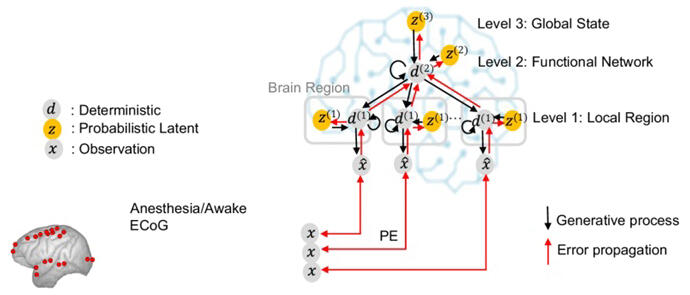The practical application of "digital twins" to model real-world objects and processes on computers is advancing. These models cover a wide range of subjects, from industrial machinery to aircraft, and recently, digital twins of human organs have been used for cardiovascular treatment and pre-surgical simulations. While there is a call for application of digital twins to personalized treatment of mental and neurological disorders due to significant individual differences, developing such models for the brain—with its complex structure and functions—has been considered difficult.
A research team led by Section Chief Yuta Takahashi of the Laboratory at the National Center of Neurology and Psychiatry (NCNP), has developed a "digital twin brain simulator" that simulates brain activity in real-time in macaque monkeys—a primate species—and accurately monitors their state of wakefulness. Specifically, the team modeled potential brain activity across three hierarchical levels and generated predictions of electrocorticographic (ECoG) signals, i.e. electrical activities occurring in the cerebral cortex. Furthermore, through "data assimilation techniques," which update predictions by estimating latent states in real-time based on the error between predictions and observations, they enabled high-precision simulations that reflect the brain's current state.
The research team confirmed that the ECoG signals generated by their model adequately expressed the characteristics of both anesthetized and wakeful states in drug administration simulations that induce changes in latent states during anesthesia. Additionally, they discovered functional brain networks that play crucial roles in changes to levels of wakefulness. In the future, by advancing research that comprehensively reproduces information processing modulations in mental and neurological disorders through integrated modeling of brain activity and sensory signals, this work is expected to contribute to understanding pathologies and developing personalized treatments for mental and neurological disorders.
(Article: Masanori Nakajo)





